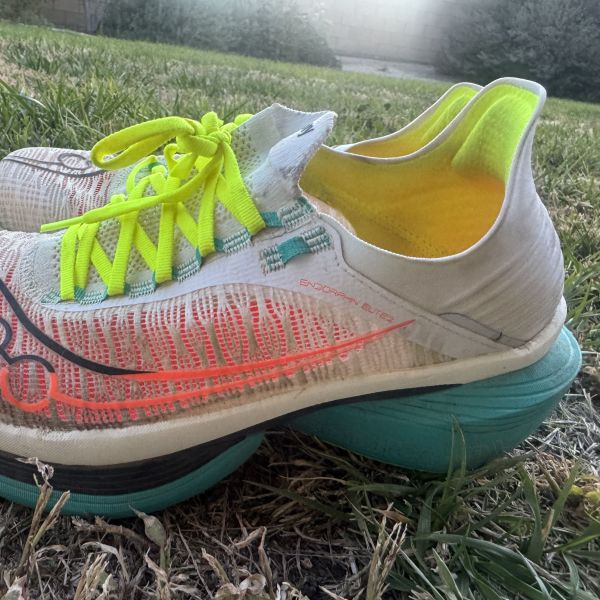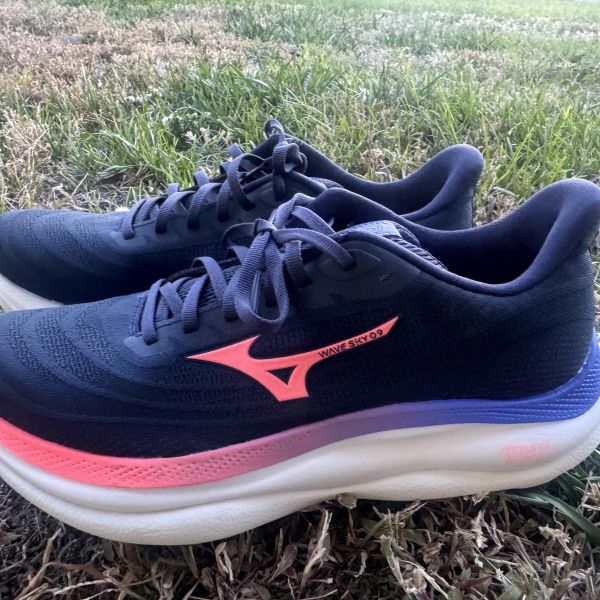What's your running shoe rotation look like?
Do you...
👉If you run at least 2-3 times per week with any regularity, you could benefit from a running shoe rotation.
👟👟With a couple pairs of running shoes in your closet:👟👟
👟Want to learn how to create your own running shoe rotation?
Keep reading to get to the heart of what a running shoe rotation is, why having one is important, and how you can create your own!
Much like a golfer wouldn’t show up to a course without their arsenal of clubs, each of which has a purpose for the game, a running shoe rotation functions in a similar manner.
Think about it this way...
A running shoe rotation allows you to match your daily run goals to a specific pair of shoes.
A basic shoe rotation consists of at least three pairs of running shoes:
The Daily Trainer is the the reliable workhorse for most of your running.
These running shoes might not be flashy, but you will spend a lot of time in them, so it’s vital to pick one with which you’re compatible.
Daily trainers on the market today usually cater to comfort, but there are a few other characteristics you might consider when choosing a daily running shoe.
Qualities to look for in a daily trainer:
Some popular daily trainers:
Daily trainers should be able to take a beating, since they do most of the work in the scheme of a weekly running schedule.
Not sure how to determine if your shoes are ready to retire?
👉Check out Evan’s article on when to replace running shoes!
Daily trainers offer a wide range of support options.
What does “support” actually mean when we talk about running shoes?
All running shoes have some level of support even if they are advertised as “neutral."
But not all offer stability or motion control for overpronation/supination (read Lucie’s article about these foot types to learn more).
Designed to support the arch of the foot, designed for runners who are overpronators.
Some examples of popular stability shoes are the:
Designed for runners with flat feet, large builds, or have severe overpronation. Often heavier and stiffer than stability shoes.
Daily trainers with the right type of support can be a game changer in terms of injury prevention and runner longevity, but the quest should also consider a shoe’s function in the rotation.
For runners who are putting in a lot of high volume training, are prone to injury or impaired recovery, or those who simply want more options, it doesn’t hurt to have a few different daily trainers in the arsenal.
Your daily trainer selection can range from plush and cloud-like to proprioceptively rich, barefoot experiences.
Before you purchase a minimalist or maximalist shoe:
A minimalist shoe is designed to emulate barefoot running while offering various degrees of underfoot protection.
While minimalist shoes do not work for everyone and they require a gradual introduction into a shoe rotation, some runners have anecdotally found minimalist footwear or barefoot running to be helpful in staving off injury.
It is vital to consider your injury history as a runner before immediately jumping into a minimalist shoe, so tread carefully and do your research, bearing in mind that what works for your running buddies or an elite you follow on social media may not work for you, and that is OK!
Some popular minimalist shoes:
On the other end of the spectrum are the highly cushioned maximalist shoes that feel like a warm (yet breathable) hug on your sore feet and tired legs.
When you’re trying on maximalist shoes, expect them to be rather plush, have tons of underfoot protection and comfortable upper material, a higher stack, and generally, a higher heel-to-toe drop (10-12 mm or more).
Higher drop daily trainers will take the load off your ankles and lower leg, making them a better choice for runners struggling with plantar fasciitis, Achilles, or posterior tibial tendonitis.
Popular daily trainers with loads of cushioning:
Since daily trainers are your foundational shoe, you’ll likely go through several pairs throughout your running career.
Daily trainers usually start at $110 and quickly rise in price depending on the brand, materials used, and special shoe features or customization.
One of the easiest ways to save money on running shoes is to buy previous years’ models and seek clearance sales at your local running store or on 3rd party retailer websites.
Websites with notoriously good deals on running shoes:
With a daily workhorse or two (or three..or more) on your shoe rack, it’s time to seek out some fast shoes that will help you fly through your speed workouts.
While you’ll only be using this shoe once or twice per week depending on your training schedule, finding a shoe that simultaneously provides enough ground feel and protection without sacrificing too much durability is key.
Expect to see more wear on these shoes than you would a daily trainer since speedwork shoes are generally made with less (and lighter) material, though they are usually more resilient than race-specific shoes with carbon plates.
Popular Speedwork Shoes include:
If you’ve been a part of the running world for any length of time, you’ve probably heard the term “responsive” thrown around to describe a workout or racing shoe.
But what does that actually mean?
Responsiveness, as defined by the Doctors of Running Podcast (episode #126), is the ability of a shoe to respond to load.
A shoe’s responsiveness is the product of several construction characteristics including:
With all of these factors determining how much a shoe gives back to you in stride, responsiveness is highly subjective.
It might take a few tries to find your best fit when it comes to a responsive speedwork shoe, but it’s worth it when the glass slipper finally fits!
A single running shoe can weigh anywhere from 6-11 oz depending on the shoe size and construction.
When you double the weight for a pair of running shoes, that’s 12-22 oz of extra weight you’re carrying.
On the low end, it’s the equivalent of a Campbell’s tomato soup can; as the shoes get heavier, you’re up to the weight of a standard NBA basketball!
When you’re shopping for the perfect speed work shoes...
The weights listed on each product description (unless otherwise noted) are based on the average men’s and women’s shoe size–10.5 and 8.5 respectively.
As a general guideline, the further you run, the more underfoot protection and cushioning you’ll probably want.
The final tool in a runner’s shoe rotation is the carbon-plated racing shoe AKA supershoes!
While they are not a necessity, plated racing shoes are surging in popularity.
If you’ve run a road race lately, you’ve probably seen them on the startline...
While these shoes are impressive feats of engineering that can help some runners achieve personal bests, they should be treated as a tool used periodically rather than as daily trainers.
Early research on carbon-plated super shoes doesn’t show conclusive evidence to support greater injury risk, but it also doesn’t provide evidence to show they are entirely safe either.
What we do know is that...
Carbon-Plated Racing Shoe Factors to Consider:
Popular plated racing shoes:
Since many plated racing shoes start around $200, they are quite the investment for most runners.
Budget-friendly plated racing shoes (less than $200):
Keep in mind that since these shoes typically have a carbon fiber plate or similar elements to create stiffness when force is applied, the durability of these shoes is reduced in comparison to daily trainers and plateless speedwork shoes...One more reason to use your super shoes sparingly.
So what’s the big deal with plated shoes?
Some shoes will have a plate that extends the entire length of the shoe while others will only be present in certain parts of the shoe, or shaped with ‘wings’.
On top of the plate technology present in racing shoes, the advancements in midsole foam are worth noting when choosing a racing shoe for your shoe rotation.
A racing shoe midsole should simultaneously be able to absorb shock while also retaining enough of its shape to “give back” what the runner puts into it.
Plates and rods add stiffness while midsole foams absorb and return energy from footstrike. The most commonly used foams on the market now are EVA, TPU, PEBA, and EVA infused with CO2 or nitrogen.
Now to get into what each of those abbreviations actually mean:
Wondering what running shoes we rotate through?
Check out these running shoe rotation picks from the WeeViews team...
Share your favorite picks in the comments.

Login to your account to leave a comment.





We Want to Give it to You!
